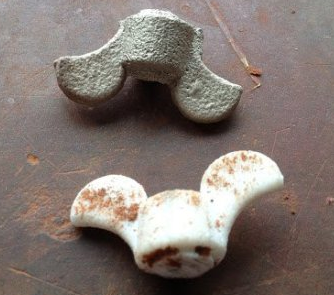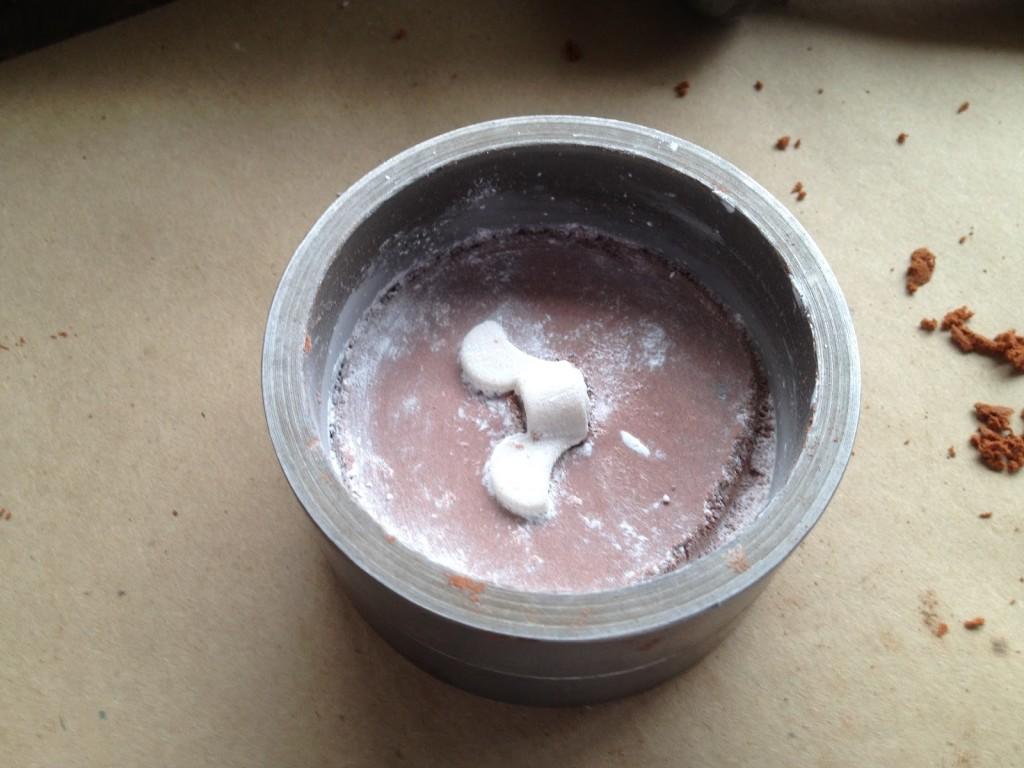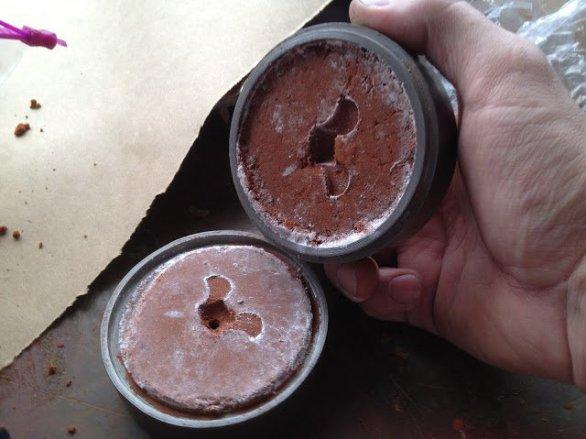 The term “sand casting” refers to exactly what it sounds like. It is a very common way of casting metal parts, using sand as the mold. This is a very popular method of casting, with roughly 70% of all cast metals made by the sand casting process. Well, if you are into 3D printing, you can also sand cast using 3D printed parts for the mold. A recent blog post by Frankie Flood documented, mostly in photos, the technique he used to make his own custom-sized wingnuts based on hardware CAD files.
The term “sand casting” refers to exactly what it sounds like. It is a very common way of casting metal parts, using sand as the mold. This is a very popular method of casting, with roughly 70% of all cast metals made by the sand casting process. Well, if you are into 3D printing, you can also sand cast using 3D printed parts for the mold. A recent blog post by Frankie Flood documented, mostly in photos, the technique he used to make his own custom-sized wingnuts based on hardware CAD files.
Flood’s experiments with sand casting are documented on his blog, and here he explains how this all came about. He credits McMaster-Carr, parts supplier to global industrial and commercial facilities, for making their hardware CAD files available. This allows people to 3D print them in a hurry, which is what Flood needed when he got involved in sand casting 3D printed custom-sized wingnut parts.
“You have to love McMaster-Carr. They’re kind enough to post CAD files of their hardware,” Flood told Make Magazine. “This makes life easier when I need a wingnut in a hurry or if they don’t have the size I need. This happened this past week, so I downloaded their file, scaled the model to the size I needed, printed it out on the ZCorp 3D printer, made a sand mold of the print, cast it in bronze, cut off the sprue, sandblasted, drilled and tapped on the lathe, polished, and then installed it. Not quite as simple as placing an order, but they didn’t have what I wanted anyway.”
 Using his 3D printer and the sand casting technique, with several extra post-processing and finishing steps, Flood was able to fulfill his own need for custom-sized parts that the company would not have been able to supply anyway.
Using his 3D printer and the sand casting technique, with several extra post-processing and finishing steps, Flood was able to fulfill his own need for custom-sized parts that the company would not have been able to supply anyway.
Later, Flood’s photo gallery expanded when he needed more custom-sized wingnuts. In casting, flasks are the molds used, and sand is used inside them to hold the shape that becomes the bronze metal part. Flood describes in more detail how he managed to do this using some homemade flasks he made on his South Bend lathe. (A lathe is a machine that rotates a workpiece to create an object with symmetry, which is how you want your flasks to be here: symmetrical.) Here he explains this process further:
“My flask just has a small lip that fits inside the other half so they fit together nicely. I have created an indexing mark as well so I can make sure the two halves are aligned when I take my pattern out and put the flasks back together. These could be built out of almost anything. I’m using delft clay/sand from Rio Grande. You could also use Petrobond and some people make this themselves. My only advice is make sure to separate the charred sand from the good sand after you pull your finished cast piece out of the mold. Throw the charred stuff out as it will ruin your sand if you mix it in with the good sand.”
Got it yet? If you are brand new to the process, this is a lot to take in. But with Flood’s descriptions and extensive photo documentation of his own process, now we know more about how to sand cast using 3D printed parts. This is important, especially when you already know that you will not be able to order a correct part size anyway, requiring much innovation and a 3D printer — of course! Discuss in the Sand Casting 3D Printed Parts forum over at 3DPB.com.
Subscribe to Our Email Newsletter
Stay up-to-date on all the latest news from the 3D printing industry and receive information and offers from third party vendors.
You May Also Like
Profiling a Construction 3D Printing Pioneer: US Army Corps of Engineers’ Megan Kreiger
The world of construction 3D printing is still so new that the true experts can probably be counted on two hands. Among them is Megan Kreiger, Portfolio Manager of Additive...
US Army Corps of Engineers Taps Lincoln Electric & Eaton for Largest 3D Printed US Civil Works Part
The Soo Locks sit on the US-Canadian border, enabling maritime travel between Lake Superior and Lake Huron, from which ships can reach the rest of the Great Lakes. Crafts carrying...
Construction 3D Printing CEO Reflects on Being Female in Construction
Natalie Wadley, CEO of ChangeMaker3D, could hear the words of her daughter sitting next to her resounding in her head. “Mum, MUM, you’ve won!” Wadley had just won the prestigious...
1Print to Commercialize 3D Printed Coastal Resilience Solutions
1Print, a company that specializes in deploying additive construction (AC) for infrastructure projects, has entered an agreement with the University of Miami (UM) to accelerate commercialization of the SEAHIVE shoreline...






























